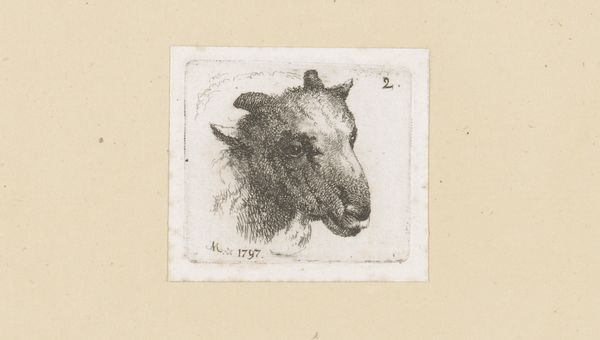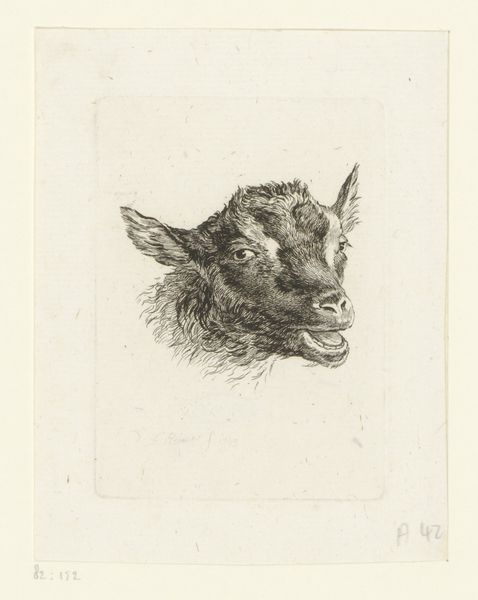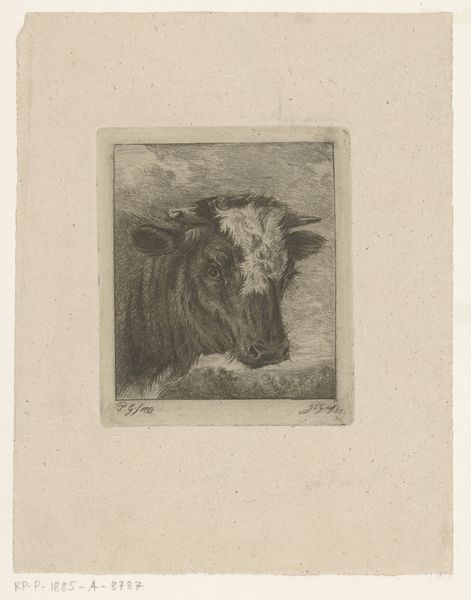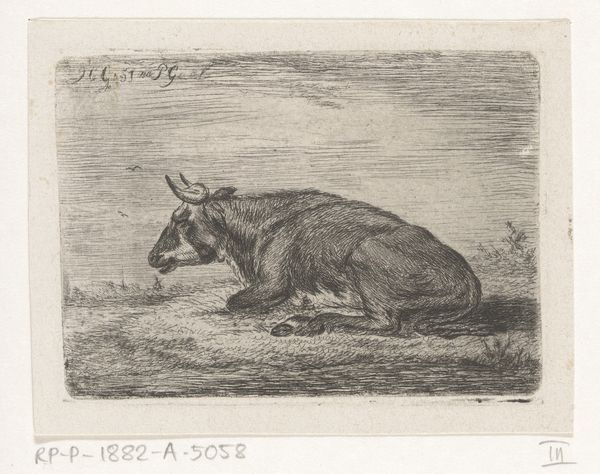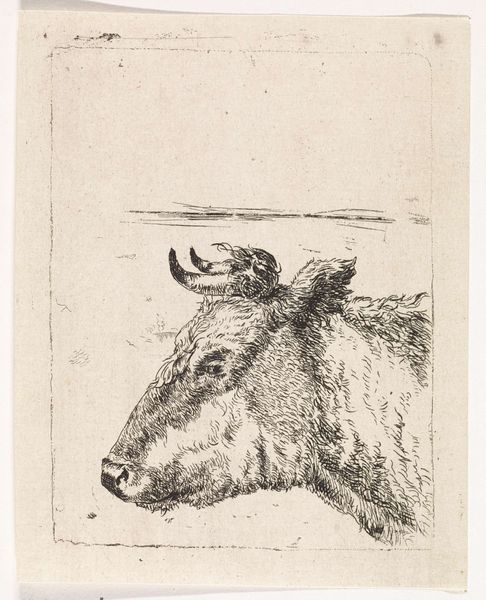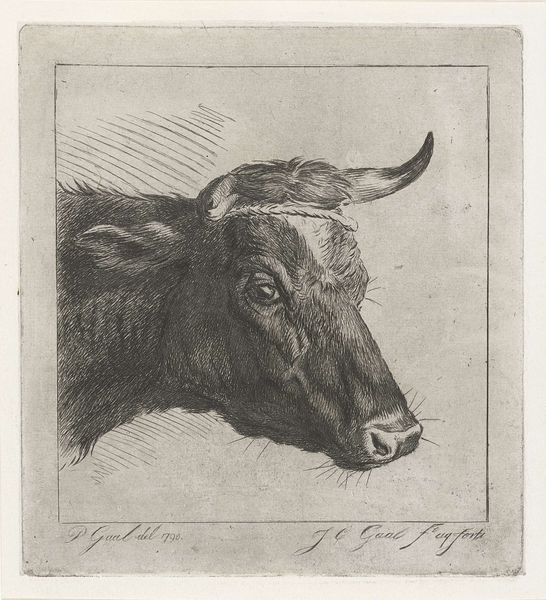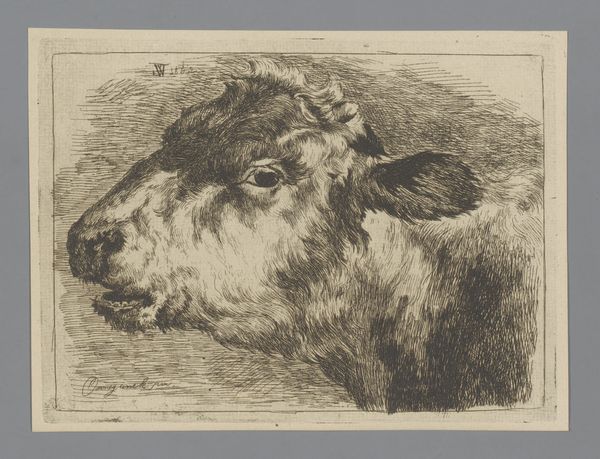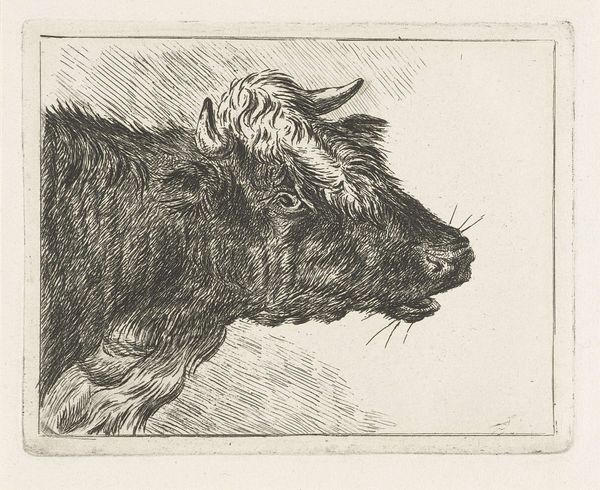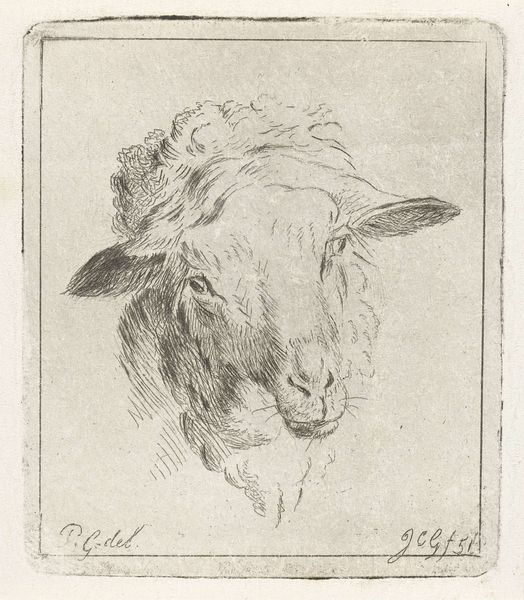
print, etching
#
portrait
# print
#
etching
#
realism
Dimensions: height 53 mm, width 48 mm
Copyright: Rijks Museum: Open Domain
Editor: Here we have Jacobus Cornelis Gaal’s “Head of a Calf,” an etching from 1851, currently housed in the Rijksmuseum. It feels… gentle, almost melancholic. What do you see in this piece, especially considering the time it was made? Curator: The vulnerability is striking, isn't it? Think about the socio-economic context of the mid-19th century. In agrarian societies, livestock, like this calf, represent not just sustenance but economic capital. How does Gaal’s rendering, its softness and almost reverent detail, complicate our understanding of the animal’s role? Editor: That’s interesting. It’s a portrait, like someone important, but it is also livestock, which might imply comments on economic status. Curator: Exactly! Gaal elevates the animal, prompting us to confront uncomfortable questions about our relationship with animals, questioning human dominance and commodification within agricultural systems. What does it mean to memorialize a being destined for consumption? Does it invite empathy, perhaps even guilt? Editor: It certainly shifts my perspective. I hadn’t considered it as a commentary on human-animal relationships, but it is undeniable in this portrayal. Thank you! Curator: The beauty of art lies in its power to provoke critical thought. The image acts as a reminder of ethical considerations. It invites a re-evaluation of these structures. I'm glad we could think it through together!
Comments
No comments
Be the first to comment and join the conversation on the ultimate creative platform.

